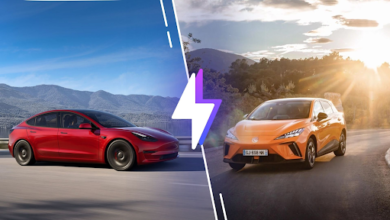Mobile Design Revolution: From Flip Phones to Foldables

The evolution of mobile phones is an extraordinary journey, marked by significant design shifts from the iconic flip phones of the early 2000s to today’s cutting-edge foldable smartphones. One such pioneering device is the Huawei Mate X6, which represents the epitome of foldable technology. Let’s delve into how mobile design has transformed and what the future holds.
How Did Flip Phones Shape Modern Mobile Design?
Flip phones, with their clamshell design, were more than just a fad. They brought ease of use and portability.
Key Features of Flip Phones
Flip phones were compact and had a protective cover, making the screen less prone to scratches. The folding mechanism allowed for smaller devices, easy to carry around. Keypads were often tactile, with physical buttons for dialing, texting, and menu navigation. Flip phones came in various styles, some even featuring small external screens for notifications. They were also durable, often surviving drops that would shatter modern smartphones. This era fostered the need for innovation in user interface design, focusing on simplicity and efficiency.
The Impact of Flip Phones on User Experience
Flip phones significantly influenced user experience. The act of flipping the phone open to answer a call had a certain allure and ease, enhancing user interaction. The tactile buttons provided a satisfying feedback for typing, aiding text message composition. The durability meant users could be less anxious about dropping their phones. The compact design made these devices easily pocketable, contributing to their mass appeal. These phones laid the groundwork for user-friendly interfaces and the importance of compact, durable designs.
What Makes Foldable Phones the Future of Mobile Design?
Foldable phones represent the next frontier in mobile innovation, offering unparalleled design flexibility.
Design Flexibility and Innovation
Foldable phones, such as the Huawei Mate X6, feature flexible displays that can be folded and unfolded like a book. This design offers tablet-like screen experiences in a pocket-sized form when folded, making multitasking and media consumption more dynamic. The innovation in hinge mechanisms, like those used in the Mate X6, ensures durability and smooth transitions between folded and unfolded states. By merging smartphone convenience with tablet functionality, foldables signal a leap in design sophistication.
The Role of the Huawei Mate X6 in the Foldable Market
The Huawei Mate X6 stands out in the foldable market with its impressive screen technology. Featuring an external 6.45-inch OLED display and an internal 7.93-inch flexible OLED screen, it promises vibrant colors and crisp resolution. The robust build includes the second generation Kunlun glass for added durability. Huawei’s software, HarmonyOS 4.3, enhances user experience with features like AI dynamic photos and multi-screen collaboration. The Mate X6 exemplifies how foldables can blend functionality, style, and innovation.
Evolution of Foldable Technology: Key Milestones
Foldable technology has witnessed significant advancements since its inception.
The Development of Foldable Displays
The journey of foldable displays began with initial prototypes showcasing flexible OLED technology. Early versions faced challenges like screen durability and efficient hinge mechanisms. However, with continuous research, materials like ultra-thin glass and innovative hinge designs emerged, allowing for commercially viable foldable devices. Brands like Huawei have been at the forefront, pushing display technology advancements to ensure longevity and seamless functionality, setting new benchmarks with each launch.
Huawei Mate X6’s Technological Advancements
The Huawei Mate X6 is equipped with cutting-edge technology. Its foldable OLED screen supports a 120Hz adaptive refresh rate for smooth visuals. The 12GB of RAM provides seamless multitasking, while the 5110mAh battery ensures long-lasting performance. The device also boasts advanced camera systems, with a 5000-megapixel ultra-vision lens and superior video capabilities. These technological features, combined with the HarmonyOS, offer a powerful, user-friendly experience, reinforcing Huawei’s dominance in foldable technology.
Why Are Foldable Phones Like the Huawei Mate X6 a Game-Changer?
Foldable phones are revolutionizing the way we use our mobile devices.
Design Benefits for Multitasking and Portability
Foldable phones transform single-screen interactions into productive multitasking environments. With devices like the Mate X6, users can split screens to run multiple apps side-by-side, enhancing productivity. The adjustable form factor allows for comfortable use in various scenarios, from reading long articles in tablet mode to quick texting in folded mode. Despite their expanded screens, these devices maintain portability, easily fitting into pockets when folded, combining convenience with enhanced functionality.
The Future of Mobile Displays and Huawei’s Role
The future of mobile displays lies in further optimizing foldable technology. Huawei continues to play a pivotal role with advancements like adaptive refresh rates and improved hinge designs. As technology progresses, foldables might include rollable or stretchable screens, further enhancing flexibility. Huawei’s commitment to innovation suggests its future models will push the boundaries of what’s possible in mobile technology, keeping them at the forefront of this design revolution.
What Can We Expect from Mobile Design in the Future?
The future of mobile design promises exciting innovations and trends.
Trends to Watch in Mobile Design
Expect advancements in materials, such as more durable and flexible screens. Integration of AI to enhance user experiences through intelligent features is on the rise. Improved battery technologies will lead to longer-lasting and faster-charging devices. The push for eco-friendly materials and sustainable designs will likely increase, reflecting global environmental concerns. Additionally, 5G technology will become mainstream, bringing faster connectivity and more robust mobile experiences.
The Next Generation of Foldable Phones and Beyond
The evolution of foldables will focus on refining the user experience. Expect slimmer, lighter devices with more robust hinges and screens. Future foldable phones may offer even larger unfolded displays, approaching small tablet sizes, yet fold into more compact forms. Innovations might include transparent displays or integrating augmented reality (AR) functionalities. As Huawei continues leading these developments, their contributions will shape the next wave of breakthrough mobile designs.
Conclusion
The progression from flip phones to foldables highlights an era of rapid technological innovation. The Huawei mate x6 exemplifies the pinnacle of foldable technology, showcasing the future of mobile design. By understanding this evolution, we can appreciate the technological marvels shaping our mobile experiences today and anticipate the groundbreaking advancements on the horizon.





